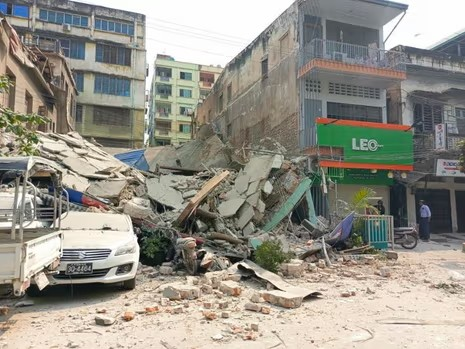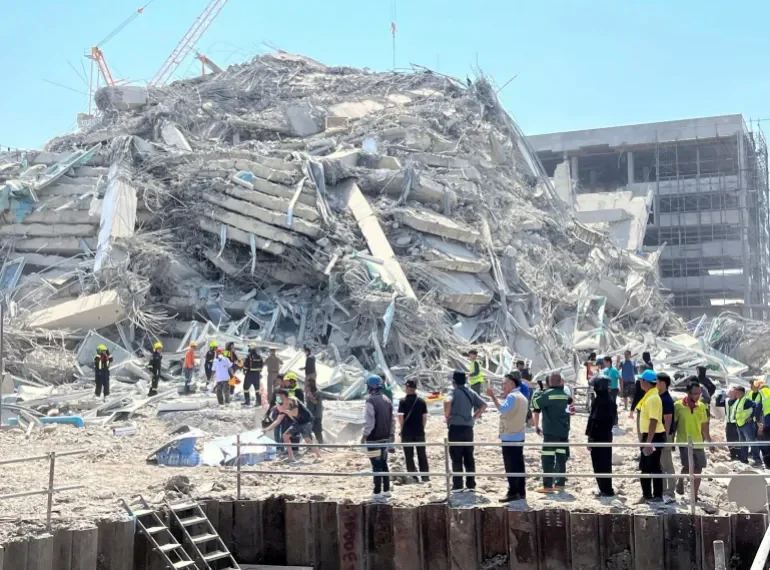The World Health Organisation (WHO) has triggered its emergency management system in response to an earthquake in Myanmar and was mobilising its logistics hub in Dubai to prepare trauma injury supplies.
Spokeswoman Margaret Harris told a media briefing that the WHO is coordinating its earthquake response from its Geneva headquarters “because we see this as a huge event” with “clearly a very, very big threat to life and health.”
“We’ve activated our logistics hub to look particularly for trauma supplies and things like external fixators because we expect that there will be many, many injuries that need to be dealt with.”
Margaret Harris
She added that the WHO would focus on sending essential medicines.
Harris said that due to recent experience with the 2023 Turkey-Syria earthquakes, “we know very well what you need to send in first.”
“We are ready to move in – but now we have to know exactly where, what and why. It’s information from the ground that’s really critical right now.”
Margaret Harris
The powerful earthquake hit Myanmar and neighbouring Thailand, destroying buildings, damaging infrastructure and killing more than 150 people.
Myanmar’s state-run television reported that at least 144 people were killed and 732 others injured in the country.
According to local authorities, at least nine people were also killed in Thailand’s capital, Bangkok.
According to the United States Geological Survey (USGS), the 7.7 magnitude quake struck just outside Myanmar’s ancient capital Mandalay at 12.50pm (06:20 GMT) on Friday, the initial tremors followed minutes later by a strong 6.4 magnitude aftershock.
Photos from the country’s modern capital, Naypyidaw, showed multiple buildings used to house civil servants destroyed by the quake, and rescue crews pulling victims from the rubble.

The Head of Myanmar’s military government said that the death toll was expected to rise.
In the Thai capital, a 33-storey building that was under construction near Chatuchak market crumpled into a cloud of dust, with onlookers seen screaming and running in a video posted on social media.

Defence Minister Phumtham Wechayachai said at least 90 people were missing.
Marie Manrique, Programme Coordinator for the International Federation of the Red Cross said to reporters in Geneva, via video link from Yangon that the organisation anticipates the impact to be “quite large.”
“Public infrastructure has been damaged including roads, bridges and public buildings. We currently have concerns for large scale dams that people are watching to see the conditions of them.”
Marie Manrique
Additionally, Julie Mehigan, Head of Asia, Middle East and Europe for Christian Aid, said that the earthquake would have left many people “devastated” in war torn Myanmar, which is already experiencing a massive humanitarian crisis.
“Myanmar is one of the least developed countries in the world. Even before this heartbreaking earthquake, we know conflict and displacement has left countless people in real need.”
Julie Mehigan
State Of Emergency

Myanmar’s ruling military declared a state of emergency in six regions and states, including Naypyitaw and Mandalay.
Thai Prime Minister, Paetongtarn Shinawatra also announced a state of emergency in her country.
Meanwhile, Bangkok has been declared a disaster area.
Urban rail systems in Bangkok were temporarily closed but expected to resume services on Saturday, March 29, 2025.
Chinese media reports indicate that tremors were also felt in the Yunnan and Sichuan provinces in China, causing injuries and damage to houses in the city of Ruili on the border with northern Myanmar.
According to the USGS, earthquakes are relatively common in Myanmar, where six strong quakes of 7.0 magnitude or higher struck between 1930 and 1956 near the Sagaing Fault, which runs north to south through the centre of the country.
A powerful 6.8-magnitude earthquake in the ancient capital Bagan in central Myanmar killed three people in 2016, also toppling spires and crumbling temple walls at the tourist destination.
READ ALSO: Ghana’s Public Debt Declines to GH¢726.7bn Amid Economic Expansion



















